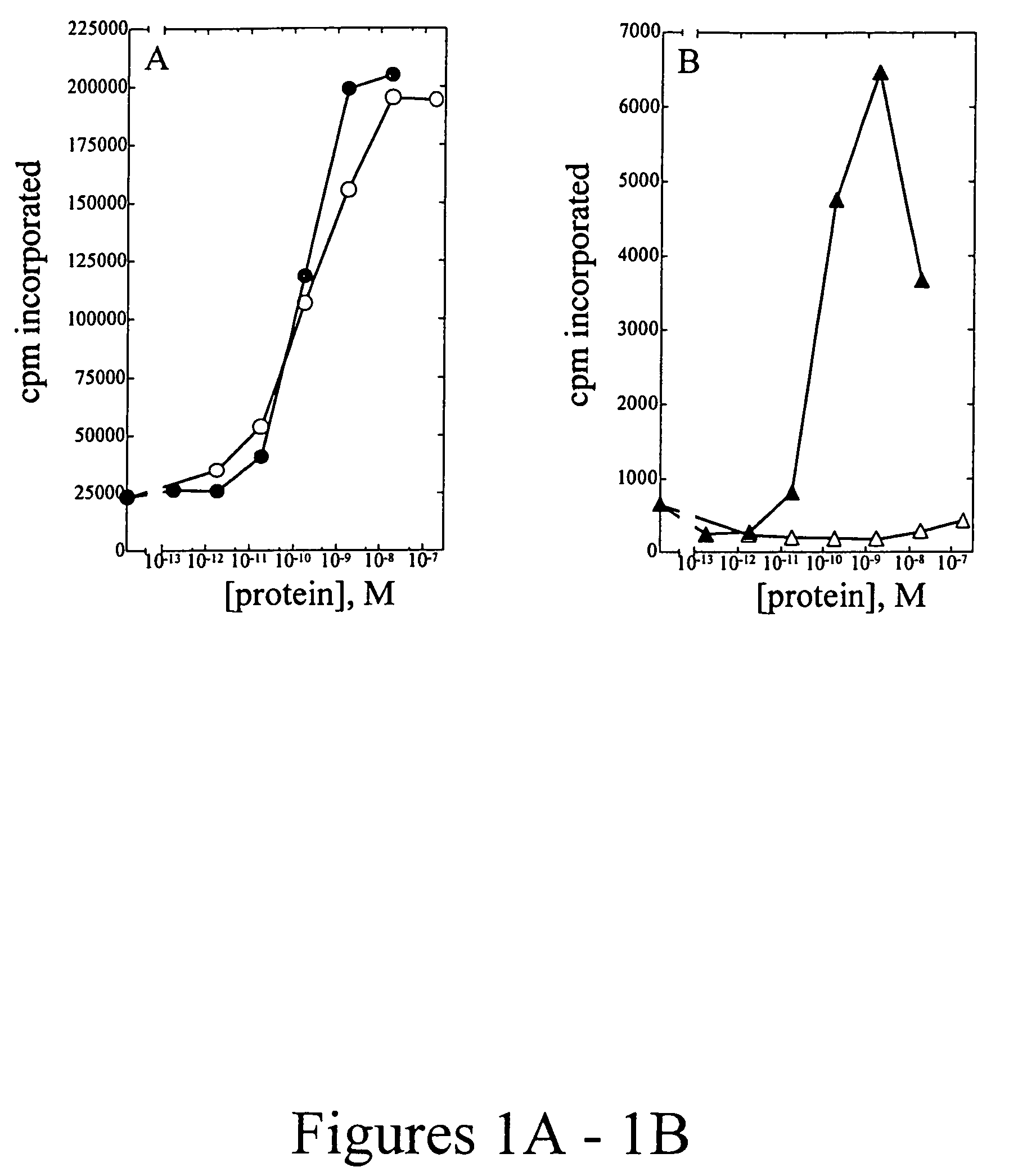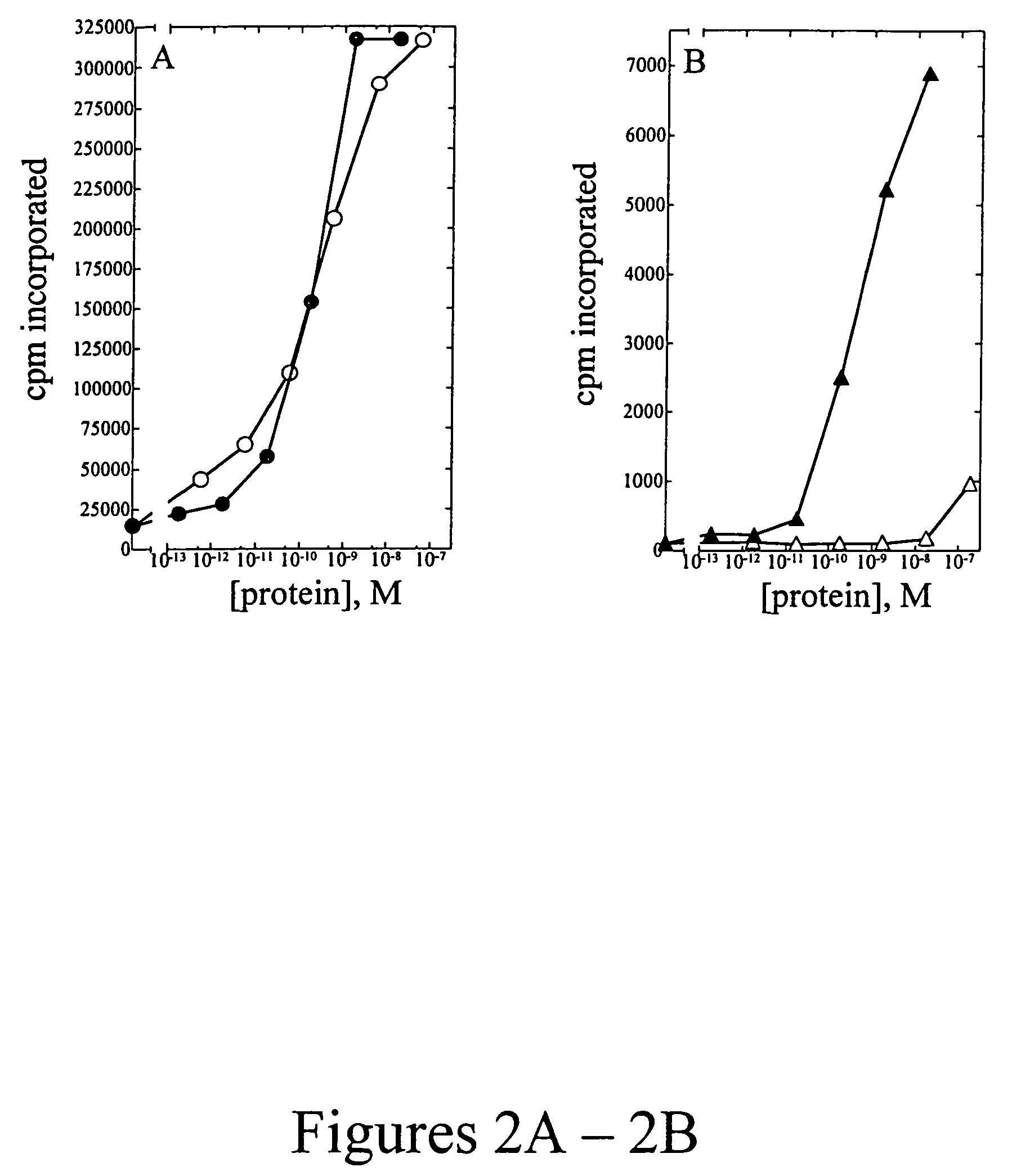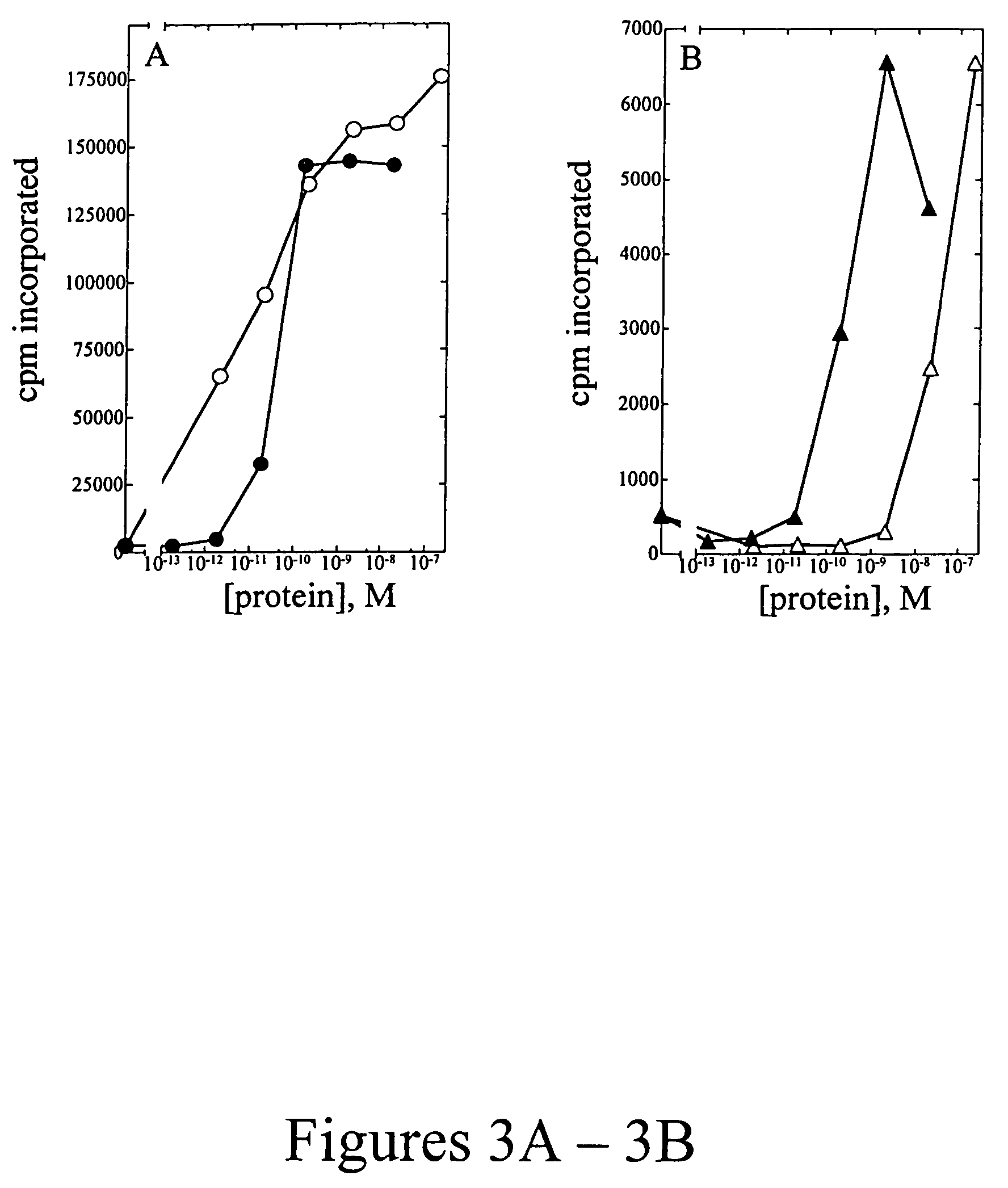IL-2 selective agonists and antagonists
a selective agonist and selective agonist technology, applied in the field of immunology, can solve the problems of limited use of il-2 in eligible patients, toxicities of il-2 therapy, severe fever, nausea, vomiting, etc., and achieve the effect of greater therapeutic use of this interleukin
- Summary
- Abstract
- Description
- Claims
- Application Information
AI Technical Summary
Benefits of technology
Problems solved by technology
Method used
Image
Examples
example 1
Production of Muteins in E. coli.
[0098]Muteins were generated by site-directed mutagenesis using primers containing codons corresponding to the desired mutation essentially as described by Kunkel T A, Roberts J D, and Zakour R A, “Rapid and efficient site-specific mutagenesis without phenotypic selection” (1987), Methods Enzymol 154: 367–382. Briefly, human IL-2 cDNA containing the restriction enzyme sites Bam HI and Xba I was subcloned into the M13 phage vector M13 mpl9 (New England Biolabs, Beverly, Mass.) using the same sites. Wild-type IL-2 cDNA was obtained using Polymerase Chain Reaction (“PCR”) from a cDNA pool generated from mRNA isolated from human peripheral blood lymphocytes induced 24 hours with phorbol 12-myristate 13-acetate (10 ng / ml). The PCR primers used were, for the 5′ end of the IL-2 open reading frame,
[0099]
(SEQ ID NO:3)5′-CCT CAA CTC CTG AAT TCA TGT ACA GGA TGC-3′;
and for the 3′ end of the IL-2 open reading frame,
[0100]
(SEQ ID NO:4)5′-GGA AGC GGA TCC TTA TCA A...
example 2
Extraction and Purification of IL-2 Muteins from E. coli.
[0105]Three hours post induction the cells were harvested by centrifugation at 10,000×g. The recombinant IL-2 muteins were renatured and purified by first dispersing the cells in 10 volume (vol. / wet mass) sucrose / Tris / EDTA buffer (0.375M sucrose, 10 mM Tris / HCL pH 8.0, 1 mM EDTA). The dispersed cells were sonicated 3 times at 300 W with 30 seconds rest intervals in a ice bath, using a Missonix model XL2020 sonicator equipped with 1 inch standard probe. The sonicated material was then centrifuged at 17,000×g for 20 minutes at 4° C. The pellet, which should be white in color at this point, was washed by resuspension and centrifugation one time in sucrose / Tris / EDTA buffer, twice with Tris / EDTA buffer (50 mM Tris / HCL pH 8.0, 1mM EDTA), and finally resuspended in 10 vol. 0.1 M Tris / HCL, pH 8.0 buffer (sample is taken at this point for gel analysis) and centrifuged for 20 minutes at 17,000×g.
[0106]The pellet was dissolved by adding...
example 3
[0107]Peripheral blood mononuclear cells (PBMC) were isolated from approximately 100 mL of normal human blood (Irwin Memorial Blood Bank, San Francisco, Calif.) diluted 1:2 in cold Dulbecco's phosphate buffered saline (Ca2+ and Mg2+ free; DPBS). Ficoll-Paque (Pharmacia) is underlayed and the sample is centrifuged to isolate the PBMC, followed by extensive washes in cold DPBS. PHA blasts (activated T cells) were generated by resuspending cells in RPMI 1640 containing 10% fetal bovine serum (Hyclone), to which 1% (w / v) of each of the following is added: L-glutamine; non-essential amino acids; sodium pyruvate; and antibiotic-antimycotic (RPMI media) at a density of 1×106 cells / ml. Phytohemmaglutanin (PHA-P; Sigma) was added at a final concentration of 10 μg / mL, and cells were incubated at 37° C., 5% CO2 for 3 days. Cells were harvested and washed two times in DPBS, resuspended in RPMI media and plated into 96-well flat bottom plates at a density of 1×105 cells...
PUM
| Property | Measurement | Unit |
|---|---|---|
| pH | aaaaa | aaaaa |
| pH | aaaaa | aaaaa |
| concentration | aaaaa | aaaaa |
Abstract
Description
Claims
Application Information
 Login to View More
Login to View More - R&D
- Intellectual Property
- Life Sciences
- Materials
- Tech Scout
- Unparalleled Data Quality
- Higher Quality Content
- 60% Fewer Hallucinations
Browse by: Latest US Patents, China's latest patents, Technical Efficacy Thesaurus, Application Domain, Technology Topic, Popular Technical Reports.
© 2025 PatSnap. All rights reserved.Legal|Privacy policy|Modern Slavery Act Transparency Statement|Sitemap|About US| Contact US: help@patsnap.com



